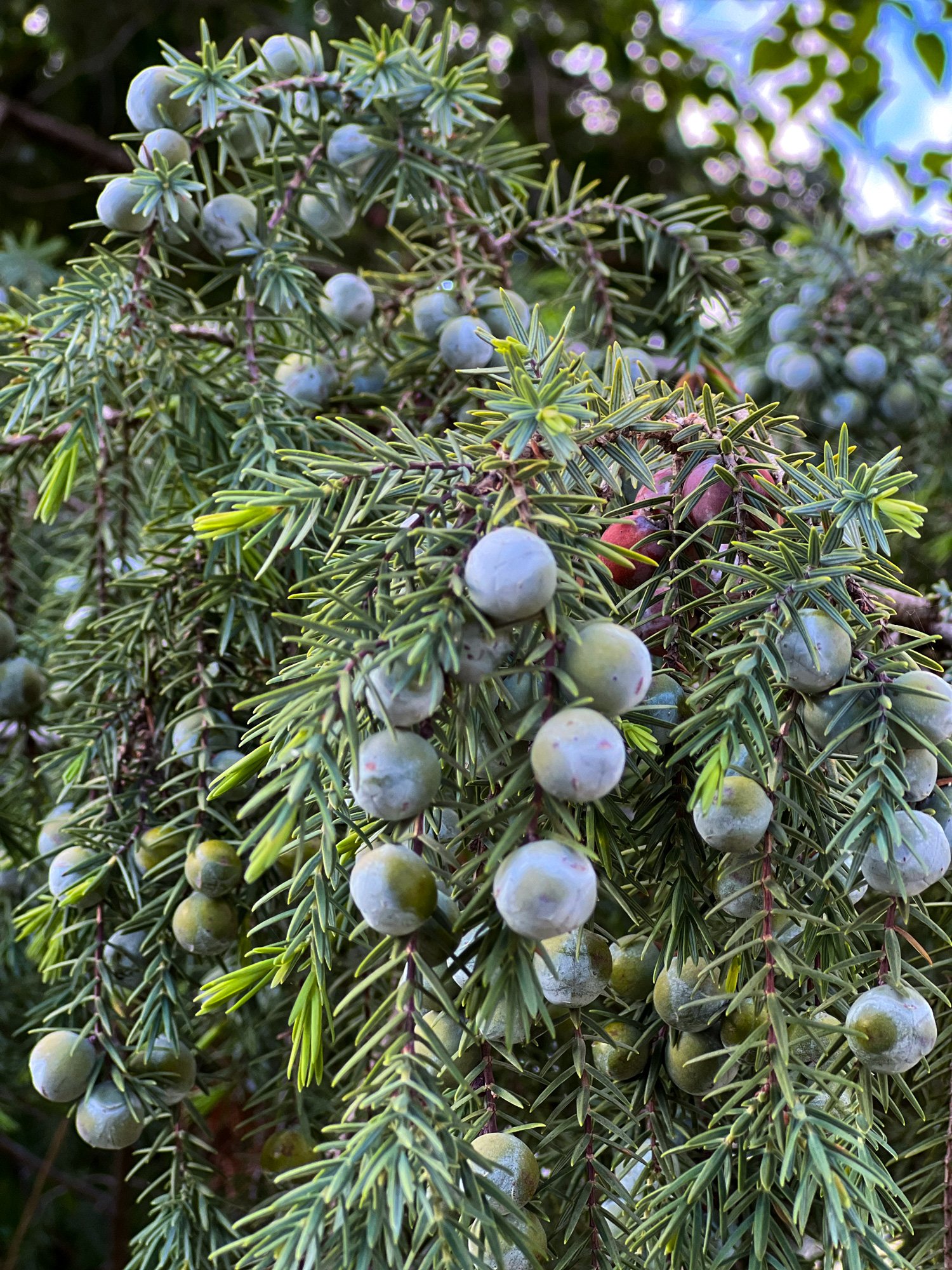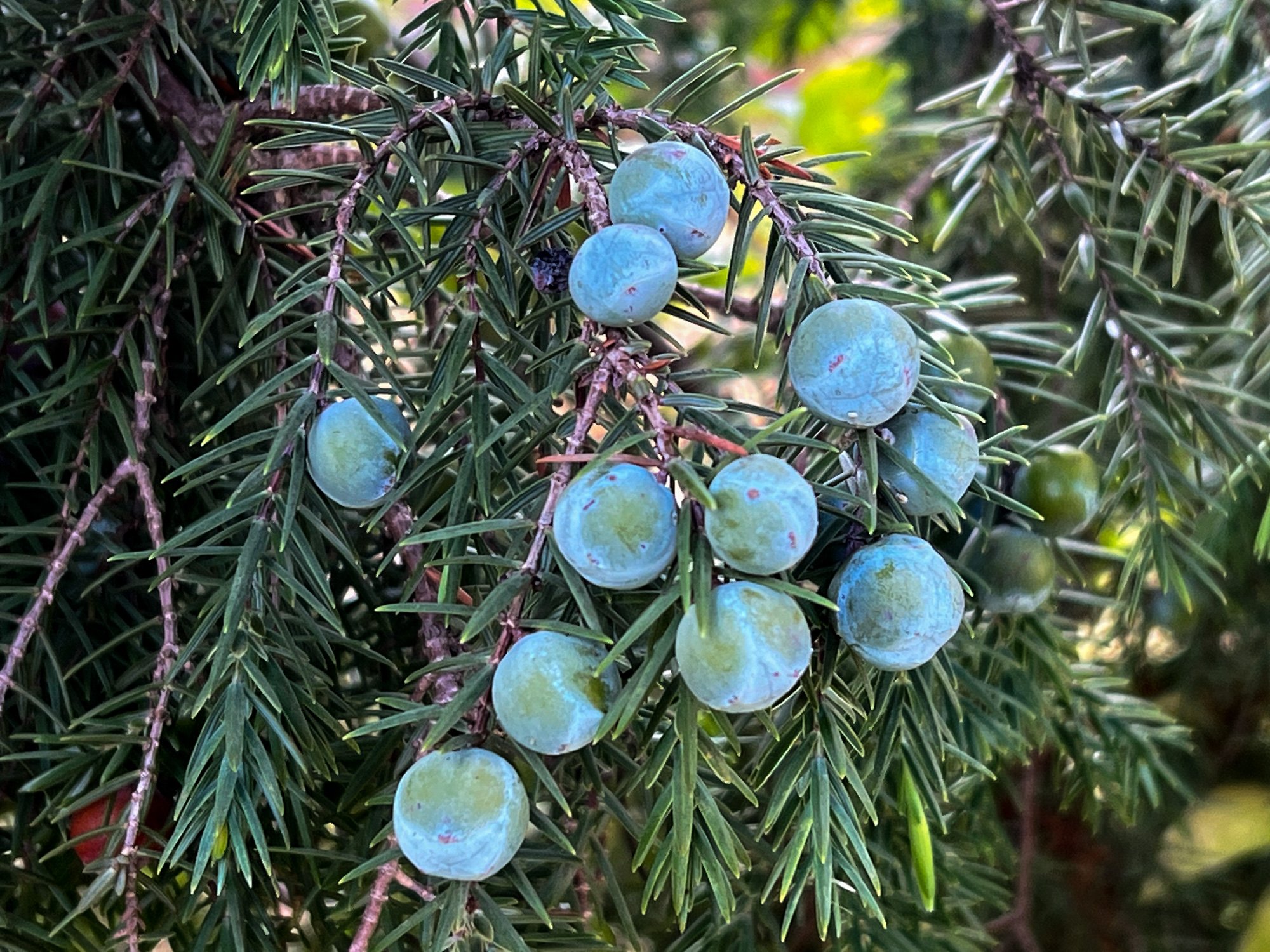Scent Journal - Juniper
Taking note of the scents that inspire us
Winter season scents. Fresh and clean. A perfect way to describe one of our most loved evergreens, Juniper (Juniperus Communis). This tall shrub produces wonderful essential oils from its needles and its cones (aka, “berries”).
Juniper berries in Tuscany



